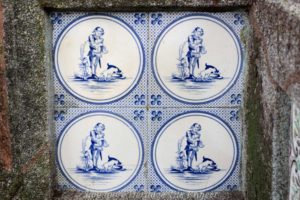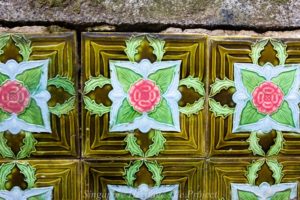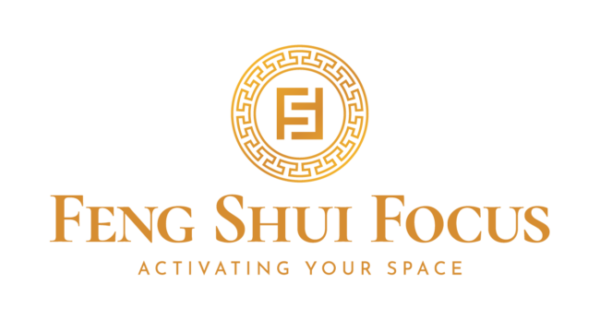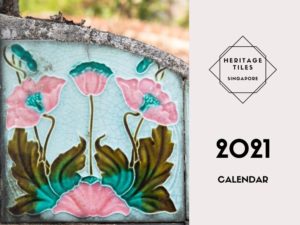I have always been fascinated by old graveyards. Shrouded in mystery and history and usually overgrown with vines, shrubs and wildflowers, I find they are most intriguing places. Not scary or spooky, but rather a medium to transport myself back in time, wondering what those peoples’ lives were like. When we lived in London, Highgate Cemetery was just up the road and I would sometimes drag my husband along for an idyllic stroll through the Cemetery. Highgate Cemetery is one of the “Magnificent Seven” cemeteries located around the outside of central London and was established in 1839. It is still used today, with the tomb of Karl Marx being one of its most famous resting places, and more recently the unmarked grave of George Michael.

Fast forward to living in Singapore, where I met Jennifer Lim and her amazing conservation work in Bukit Brown Cemetery. Jennifer has organised many volunteer groups to help her clean and maintain dozens of the ancient graves, uncovering thousands of beautiful decorative tiles. I had heard a lot about Bukit Brown Cemetery and I was excited when I finally had a chance to join Jennifer on one of her tile cleaning outings. What an experience!
Starting at the edge of the forested area, Jennifer soon took us off the beaten tracks into the wilderness of the jungle, stopping here and there so we could tidy up a grave or to point out some colourful tile panels. Soon I couldn’t even make out the trail any more but we kept going, all the while passing overgrown gravestones, until we arrived at a clearing containing a few extraordinary large and beautifully cleaned graves. This is where Jennifer shared more about her knowledge of the tiles and the architecture of the graves, one of which is in fact the resting place of her great grandparents. A truly memorable place to end the Saturday morning “tour”.
So imagine my delight when Jennifer recently asked me if she could interview me about my experience at Bukit Brown and help her find out if there might be a Feng Shui connection to some of the images pictured on the tiles!?
This is my first ever interview (!) and it gave me great pleasure to identify some of the fruits and other Feng Shui symbolism used in these picturesque tiles. Please click here if you would like to hear the interview.
What is the connection between burial sites and Feng Shui?
Of course graveyards and Feng Shui have been connected for centuries. As a matter of fact, finding an adequate burial site for the deceased is the origin of Feng Shui! This is also known as “Yin Feng Shui” – meaning Feng Shui for the dead, from which “Yang Feng Shui” – Feng Shui for the living – developed later on.
For the Chinese finding the best possible burial site or resting place is extremely important because they believe that their connection to the deceased remains even after death. According to their mythology, our souls are linked and all families share karma, spanning generations. So if the body or bones are correctly laid to rest, one can tap beneficial chi and transmit these positive energies to their descendants, thereby enhancing their fortunes and good health. Conversely, if the burial was not auspicious and certain requirements were not met, negative frequencies could be passed down to family members and future generations.
Characteristics of an auspicious burial site
The main features to look for are mountains and bodies of water. An auspicious landform contains soft rolling hills in the background with many trees, lower hills on the sides, and an open area at the front – even better if there is water in the open space. This relates to the entire cemetery, not just the individual grave.
Once a suitable place was found, there are many more points to consider, such as:
-
-
- Choose a site with sunlight – otherwise the deceased may have few male offspring and female offspring may be unhappy for no reasons.
- Avoid sites on a mountain ridge or mountain top – this may lead the offspring to have harsh lives.
- Avoid sites with water flowing through – this can bring illness to descendants.
- Avoid burying loved ones near a tree because roots can interfere with the coffins.
- A Feng Shui master should calculate the correct angle at which to bury the body and also the day of the funeral to be held.
-
Did you know?
Originally, Bukit Brown Cemetery was laid out in a very typical English manner with straight rows of graves, but that was very unpopular with the local Chinese as they wanted to follow their deeply rooted traditions of how to position their graves (as you will know, having read my blog this far!). They preferred grave locations with the back to a hill for protection and a lovely view at the front; and the hilly ground of the Bukit Brown area was perfect for that. So the authorities quickly changed their mind and allowed grave locations in a circular fashion following the hilly topography, which offered lots of opportunities for the individuals to find their best location according to their best facing direction. An added bonus was the ability to choose a grave location higher up on the hills, depending on the budget, with the best views obviously from the top (and therefore more expensive).
Some of the gorgeous tiles found at Bukit Brown Cemetery:
I am truly in awe of the love and dedication with which Jennifer is pursuing her Singapore Heritage Tile Project. Just look at some of these beauties Jennifer uncovered!

Surrounded by beautiful flower tiles, the centre of attention here is the peacock. In Feng Shui mythology, the peacock is considered an earthly manifestation of the celestial phoenix, thereby promoting fame and good luck, but also enhancing protection and awareness.

This tile panel of a young man playing what looks like a flute while two dogs drink water from a bowl is one of the very unusual tiles discovered by Jennifer. It is extremely rare to have figures of people featured in the ornamental tiles and a very unusual motif for a Chinese grave. The tiles come from Europe; the colour blue is often considered a mourning colour, but Jennifer has not yet been able to figure out a more comprehensive meaning or story behind the image.

While floral tiles are quite popular, this is one of the rarer finds due to its green colours. It is also interesting to note how a squarish pattern has been created through the arrangement of the leaves and then emphasized through the background design.
Quick facts:
-
-
- Jennifer and her teams cleaned more than 2,000 individual tiles at Bukit Brown Cemetery.
- Some of the tiles are over 100 years old!
- More than 100 volunteers helped Jennifer over a 5-month period of visiting Bukit Brown Cemetery to clean up graves.
-
It was the interview with Jennifer that inspired me to write this blog, and I hope you have enjoyed reading it.
If you would like to find out more about Jennifer’s work through the Singapore Heritage Tile Project, as well as her artist work, please click here to have a look at her website. You will also find Jennifer’s beautiful Heritage Tile Calendar there (which you can order) and the book she is working on.





